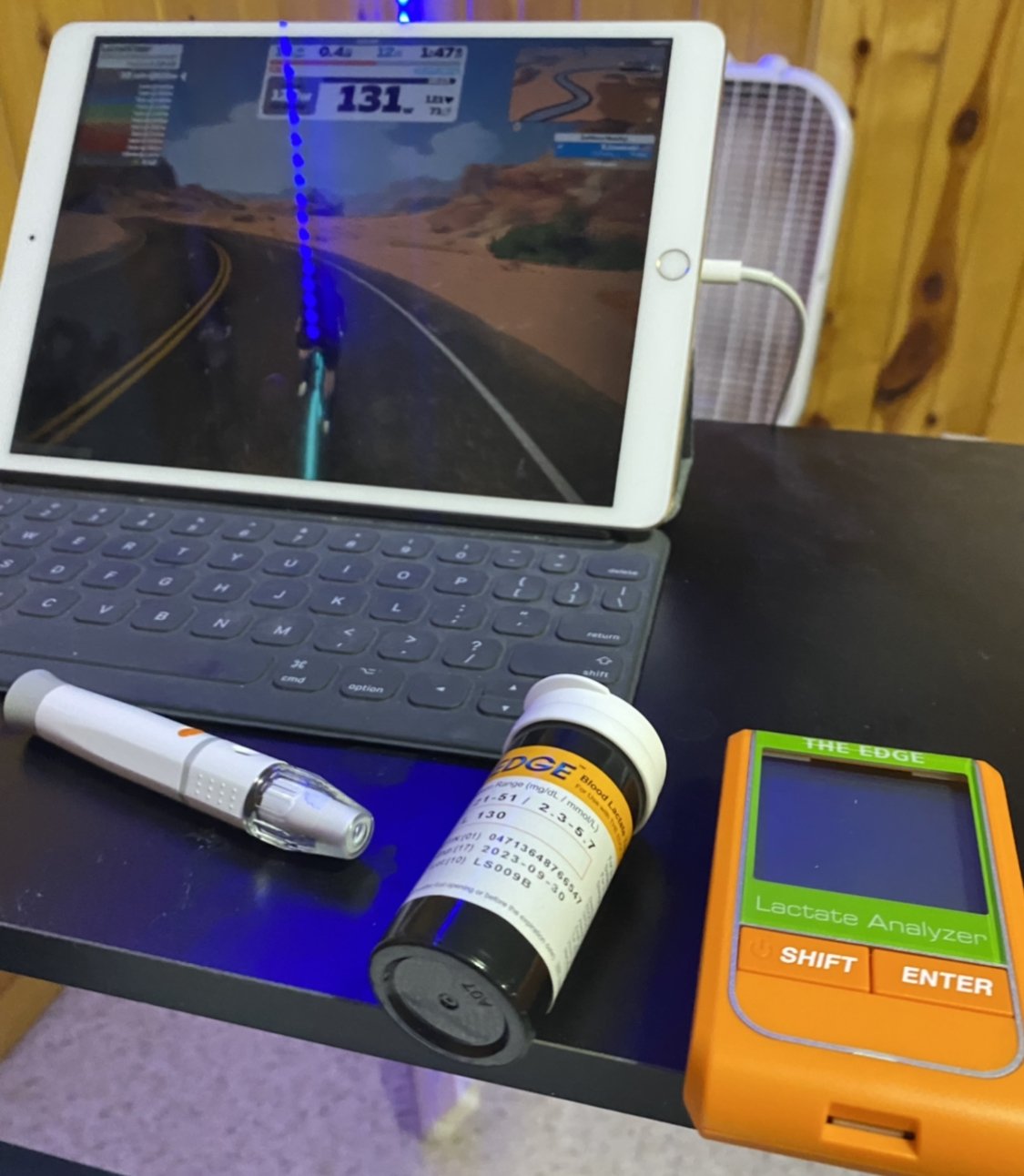Lactate Threshold Testing
First self test!
“Back to the lab again” - Eminem
I’ll start off by saying I’m not a sport scientist, just an amateur triathlete / coach who likes to nerd out on the science of sport.
—
Back to Biology 101
—
When I say the word “mitochondria” most of us harken back to our high school days and shout out “the powerhouse of the cell”! Okay, maybe you’re not quite as enthusiastic about it, but it’s about the only thing people remember from biology, probably because it’s a cool name with a cool job description.
If we think about it through an endurance mindset, this powerhouse takes on a special importance. All endurance activities are a function of energy creation (via the mitochondria) and distribution (biomechanical aka form/aerodynamic efficiency). In this post we will focus entirely on the energy creation part.
To skip some steps and simplify things: at high intensities these mitochondria burn through a proportionately higher amount of carbohydrates to create energy using the anaerobic system which creates lactate (lactic acid) as a by product.
HR and Power data from test: beyond 165HR couldn’t really stabilize!
At low intensities mitochondria burn primarily fats through the aerobic system, which can also utilize some of the lactate produced anaerobically to prevent it from building up too much!
Events as short as a 5k can be 95% energy created from aerobic system, so for a marathon/Ironman, it’s nearly 100% determined by how efficient our aerobic system is!
The good and bad news is that training the aerobic system needs to be done EASY. Easy sounds enticing, which is good! But easy is also a shock to the ego…most of us are training too hard and have to dial it WAY back. Athletes who pride themselves on pushing hard and having more willpower than others might do well in short events, but in events for 2+ hours especially, when we run out of gas there’s no amount of will power that can fuel us forward (speaking from experience here…). This becomes harder still for time-starved athletes because if we only have 1 hour to train during the weekday, we feel like HARDER = BETTER, but that’s not necessarily true and can actually do more harm than good. By training anaerobically we have a higher metabolic cost (basically we feel wiped out always) and we have made it harder to recover while only (potentially) improving our anaerobic threshold…
Now, the whole of training philosophy could go on and on about optimal intensity distribution (there are some other benefits at higher intensities) but if the MAIN limiter is the aerobic system then that’s what we should mainly be concerned with training!
Back to the lactate test: on average the markers we are looking for are 2mmol for the aerobic threshold (below it is almost entirely using aerobic system) and 4mmol anaerobic threshold (above it is almost entirely using the anaerobic system). These numbers are averages (individuals can be quite different) but they represent different inflection points; once we hit a certain intensity (Aerobic threshold) lactate starts ramping slowly and then rapidly once we hit the Anaerobic threshold.
—
So, if we take my self test into consideration with a grain of salt for messing up some of the test strips, my “conclusion” or best guesstimate / practical application / lessons of the test are as follows:
The “lab”
Aerobic Threshold: ~165 watts & 150 heart rate (heart rate consistent with other tests I’ve done in the past).
Anaerobic threshold: ~215-240watts and 165 heart rate. I was able to stabilize at 5.1-5.2mmol for the 240-265w steps which might indicate a slightly higher than 4 lactate theshold, but I also died quickly after so…maybe not!
Going to play it safe and target 215 for select threshold sessions (max 1 session per week) with intra workout tests aiming for 3-3.5mmol to work on maximal mitochondria respiration or lactic clearance rather than lactic toleration.
The BULK of my training will be <165w for now, with the intention of doing as much volume there as I can. Will test during long sessions to maintain <2mmol with a target of 1.5.
The ultimate goal is to become more efficient at both of these two zones (and push them up from beneath them), meaning 2mmol -> 190-200w and 4mmol -> 260+ etc, which is done mainly by increasing mitochondria (and therefore aerobic capacity) through time spent at/around aerobic threshold.
Ironman Des Moines is only 6 weeks away, not really enough time to make significant strides in aerobic capacity (with the only caveat being that I believe it’s easier to develop if it’s been developed before and is “dormant” from time off rather than building it from scratch, but that’s just anecdotal). However, the 6 weeks is enough time to dig myself into a huge hole if I pushed the intensity too much and couldn’t recover!
The 12 weeks between now and Ironman Lake Placid is more comforting, that’s enough time to make some good progress, especially if really emphasizing correct and low intensity work.
For Ironman training purposes I’d do longer steps next time of 10 minutes with multiple tests each step to confirm (5 min & 10 min).
In most types of these tests we want to see what the max is, but since I raced a 5k on Sunday, a Mile on Tuesday, and tested on Thursday my desire to push super hard was low and the purpose of finding a rough estimate of my inflection points had been completed.
It’ll be fun to see how this matches up with other metrics and tests/workouts going forward! Follow along!




